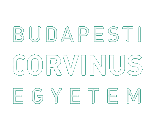Ölvedi, Tímea (2024) The new form of financial intermediation: key issues of peer-to-peer lending. Doktori (PhD) értekezés, Budapesti Corvinus Egyetem, Gazdálkodástani Doktori Iskola. DOI https://doi.org/10.14267/phd.2024014
Teljes szöveg
|
PDF : (dissertation)
1MB | |
|
PDF : (draft in English)
655kB | |
|
PDF : (az értekezés tézisei magyar nyelven)
663kB |
Hivatalos URL: https://doi.org/10.14267/phd.2024014
Kivonat, rövid leírás
In the previous years, fintech transformation and innovative technological solutions had a significant impact on the economy. This trend reached the financial market as well. Conventional financial institutions introduced a wide range of online products and services. Besides that, a disintermediation tendency has started, and alternative funding models appeared on the market, performing capital allocation. One of this new form is peer-to-peer lending (P2P) or marketplace lending, where the traditional intermediary role is left out of the process. The main idea of the business model is that the online platforms offer more beneficial conditions for borrowers compared to a bank loan. From investor perspective the expected return is promised to be higher than a bank deposit yield. However, the risk associated with this investment is also significantly higher. After the first platform was launched in 2005, the segment showed a robust expansion and several new players appeared on the market in many different countries. The strong market growth raises several questions regarding the future of financial intermediation, the role of the platforms on the financial market and their interaction with commercial banks. The purpose of this dissertation is to gain a comprehensive understanding regarding the relevance of the peer-to-peer lending platforms and to examine the market specific features. The dissertation is divided into two main sections. The first one is a theoretical overview where peer-to-peer lending is defined and embedded into the literature of financial intermediation. Then the main features of the platforms are presented in comparison with the conventional banking sector. After that, the key research directions, current market statistics and regulatory environment are summarized. In the second part, four separate papers are presented. The first two studies are exploring the market specific features, covering the characteristics of the P2P applicants and the examination of the secondary market. The remaining two papers investigate the relevance of the platforms and their potential role on the financial market. They main results of the theoretical overview and the four papers are the following: • When examining the characteristics of P2P borrowers, data was used from a market leader US platform. The results indicate that the portion of delinquent mortgages in a particular state has the highest impact on the demand for P2P funding, and the most 2 commonly declared loan purpose is debt consolidation, which suggests that borrowers need alternative funding to refinance their overdue mortgage debts. Besides that, the results suggest that the customer group of P2P platforms overlaps with bank customers and P2P platforms supplement bank lending only in a small segment and for most of the cases it substitutes bank funding, especially in the lower end of the score distribution. • According to the analysis of the secondary market dataset from a European platform, the market is relatively liquid, the demand is the highest for performing loans with 0 days past due (DPD). The discount rate on the market is quite high, which suggests that the price of liquidity has to be paid by the seller. Additionally, the market seems to be sensitive to external shock, as investors started to liquidate their claims when the pandemic started in Europe. • Based on a benchmark scoring model that we built on a European P2P dataset; we could not confirm that the platform was able to reduce information asymmetry - due to the usage of alternative information - better than traditional financial intermediaries. The average internal rate of return on closed transactions was -4.17%, and 42% of the loans end with a negative IRR. Investors are not compensated for the credit risk they take. • In case of economic distress, the growth rate of marketplace lending is in line with the economic instability of the country and the demand excessively increases from regions with weak banking system. The investigation covered 61 countries with different level of development, covering various regions.
| Tétel típusa: | Disszertáció (Doktori (PhD) értekezés) |
|---|---|
| Témavezető: | Dömötör Barbara |
| Tárgy: | Pénzügy |
| Azonosító kód: | 1334 |
| Védés dátuma: | 26 február 2024 |
| DOI: | https://doi.org/10.14267/phd.2024014 |
| Elhelyezés dátuma: | 11 Oct 2023 10:35 |
| Last Modified: | 29 Feb 2024 11:39 |
Csak a repozitórium munkatársainak: tétel módosító lap

 Letöltési statisztika
Letöltési statisztika Letöltési statisztika
Letöltési statisztika